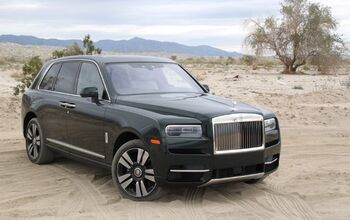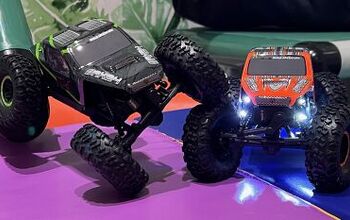Rolls-Royce Cullinan Archtecture to Underpin More Products

Rolls-Royce’ future product line is based on a new architecture developed independently from BMW.
A timeline still isn’t available for Project Cullinan, but it will be based on a new all-aluminum architecture that will underpin the brand’s upcoming utility vehicle. Rolls-Royce North America President Eric Shepherd said that the architecture slated to underpin “Project Cullinan” will share nothing with BMW and that it will serve as the basis for Rolls-Royce products followiong that vehicle.
Previous media reports suggested that the new product would share the same basic structure as the BMW X7 seven-seat crossover currently under development by BMW, set to be manufactured in its Spartanburg, SC facility. Currently the Ghost shares its basic architecture with the BMW 7 Series, but a new Rolls-Royce specific platform will allow the company to offer even more exclusive products by separating itself from high volume BMW products.
That separation is also partially due to the fact that Rolls-Royce and BMW have very different end goals for their products. As the current global luxury volume leader, BMW management needs to worry about tailpipe emissions much more than Rolls-Royce. Last year BMW sold 2,117,965 vehicles worldwide and Rolls sold a record breaking 4,063 cars.
SEE ALSO: Rolls-Royce Ghost Series II Review
That stands in contrast to strategies that large volume luxury brands like BMW and Cadillac are employing in their newest architectures. Next door to the Rolls-Royce display in the Jacob Javits Center, Cadillac is showcasing its all-new CT6 full-size sedan this week based on a new rear-wheel drive platform that uses a mixed material strategy that integrates carbon fiber reinforced plastic, magnesium and high-strength steel among other materials to save weight while offering structural rigidity.
BMW is following a similar strategy with its upcoming HPLC platform that will first underpin the next-generation 7 Series, followed by other rear-wheel drive products in its lineup. As a basis for a huge portion of BMW’s future lineup, weight savings will play a crucial role in allowing the company to improve fuel economy without marginalizing performance.
Shepherd said that for Rolls-Royce, a brand that routinely loads its vehicles with thick layers of bespoke wood trim and heavy metal decoration, weight savings isn’t nearly as much of a priority as delivery a product that delivers smooth, swift performance.
Rolls-Royce most recently introduced its refreshed Ghost Series II with the company’s “satellite aided transmission” that first arrived on the Wraith coupe. The transmission uses data about upcoming changes in topography to time gear changes for maximum smoothness. Shepherd wasn’t willing to divulge whether or not Project Cullinan will include the SAT, but he said the company is currently working on developing its first-ever all-wheel drive system to slot into the new model.
Discuss this article at our luxury lifestyle forum

Luke is an energetic automotive journalist who spends his time covering industry news and crawling the internet for the latest breaking story. When he isn't in the office, Luke can be found obsessively browsing used car listings, drinking scotch at his favorite bar and dreaming of what to drive next, though the list grows a lot faster than his bank account. He's always on <A title="@lukevandezande on Twitter" href="http://twitter.com/lukevandezande">Twitter</A> looking for a good car conversation. Find Luke on <A title="@lukevandezande on Twitter" href="http://twitter.com/lukevandezande">Twitter</A> and <A title="Luke on Google+" href="http://plus.google.com/112531385961538774338?rel=author">Google+</A>.
More by Luke Vandezande
































Comments
Join the conversation
I'm surprised the Germans are allowing them to develop their own architecture. We'll see how long this lasts ...